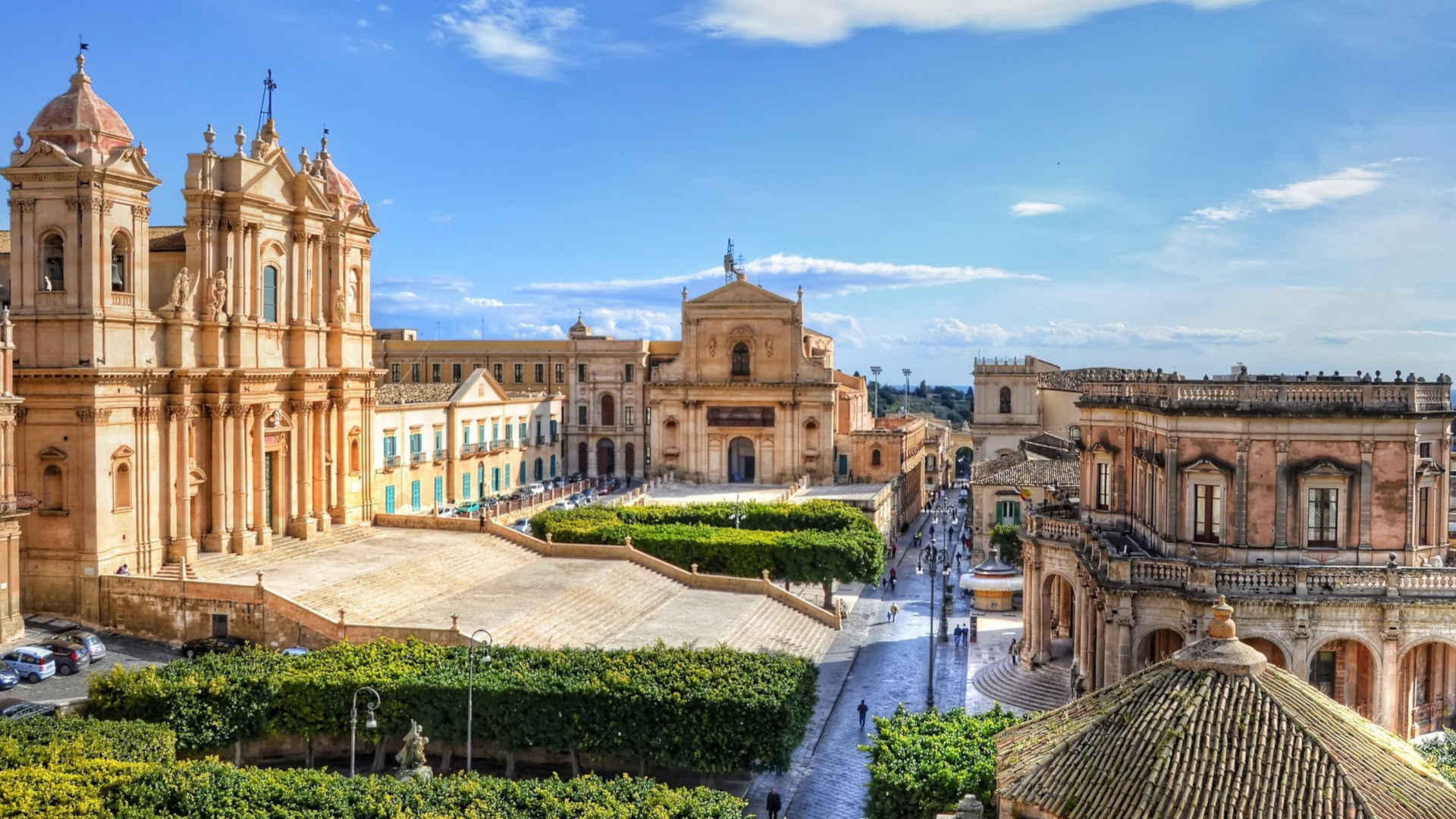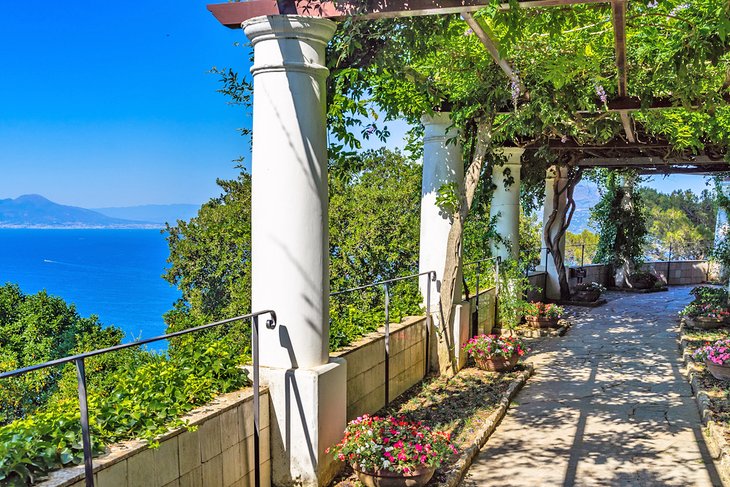Greek Orthodox churches
Home » Blog » Uncategorized
Just a few hours’ flight from France, the Cyclades archipelago ticks all the boxes for a top-of-the-range holiday. Would you like to rent a villa for a wedding or anniversary? Bellavista offers you its most beautiful residences overlooking the turquoise blue sea. As you stroll through the countryside, you’ll discover many whitewashed churches with cobalt-blue domes. We’d like to take you on a tour of these churches, which are often built in the most beautiful locations on the island.
In the Cyclades, there are many Orthodox churches with whitewashed walls and blue domes. White reflects heat, while black absorbs it. The rounded shape of the roof is designed to better capture the meltems, the autumn winds. That’s why planes are often white, and why you need to wear white in summer and black in winter. White is also the color of purity. Limewash paint is a natural disinfectant that does not destroy living organisms. The paint has pores, so interior rooms can breathe easily. In May, houses are painted, but not only! Trees and streets are also painted up to a metre high. White is also a sign of spirituality and holiness, which is why Greek Orthodox churches are painted scarlet white. Finally, white is the national color. Blue represents the five seas. Blue and white are a reminder of the renaissance following the war of independence against the Turkish yoke. The cobalt-blue domes represent the Mediterranean Sea and the sky, as a point of spiritual contact. Surprisingly, in Latin and Ancient Greek, there is no word for the color blue! In Antiquity, blue is replaced by transparent or light black. It was the word Azur (azurium in Latin and لاجورد ladjvard in Persian) that was first used to describe the sky and sea. Even today, some languages have several words for blue. In Greek there’s κύανος (kyanos, root of the color cyan) and γλάυκος (glaukos), while in Russian there’s голубой (goluboy) and синий (sinii). In Persian, the words water and blue are the same: آب (ôb).
It’s impossible to talk about Greek churches without mentioning Mount Athos (Το όρος Άθωνας), which is a sacred place in Orthodoxy. Located in northern Greece‘s Thrace region, it is off-limits to women and even female animals. Only female cats are tolerated on Mount Athos, as they are unrivalled rodent hunters. Mount Athos itself is at the end of the 40-kilometer Akté peninsula. There are twenty monasteries and 2,000 monks on this peninsula. The monasteries have their own distinctive style. Very Greek, they are sometimes mistaken for temples, and the wooden mounts could be similar to those we see in China. The monks venerate the Virgin Mary. They believe that for prayers to be successful, there must be no women on the sanctuary grounds. The Monastic Republic of Mount Athos was proclaimed in 1923. However, monks have been there since the beginning of Orthodoxy, and the region has had a special status since the 7th century. The men of faith complained to Emperor John I Tsimiskès about the intrusions of sheep and shepherdesses, which were a source of temptation. It was Emperor Constentin IV who gave specific status to Mount Athos. The monks had their own police force, hospital and taxes. However, when it came to teaching religion to the Hellenic priests who would officiate in the great churches of the Near East, the monks would have to lend a hand. Not far from Mount Athos is Istanbul, also known by its medieval name, Constantinople. A cathedral built in the 4th century BC, once the largest in the East, St. Sophia’s shines brightly. In Greek, Agia Sopia (Ἁγία Σοφία) means God’s wisdom. The cathedral became a mosque ten centuries later under the reign of Mehmet II, who imposed his religion by force.
Finally, let’s finish with the monastery of Saint John the Theologian. Located on the island of Patmos (Πάτμος) an hour from Naxos. The place of worship was founded in 1088 by Kristodoulos, a disciple of Emperor Alexis I who was offered the island. The monastery was a gift of gratitude to the emperor, but the monks rebelled and drove the possessor off the island of Patmos. The monastery brought considerable wealth to the island. A large library was added to every year, with unpublished duplicates of the Alexandria and Constantinople libraries. The churches of Rome and the Near East also bequeathed books and offerings. Many religious travelers (including some from Mount Athos), scholars and diplomats visited the island to expand their culture. The monastery was once home to 1,500 monks, but today only 25 remain.
Want to live like the locals? Then we invite you to take a look at our whitewashed villas. On the magnificent island of Santorini, Bellavista invites you to escape to this sumptuous property overlooking the turquoise-blue waves of the Aegean Sea. This property is sophisticated and built in classic Mykonos architecture. This beautiful villa renovated in 2014 on the island of Santorini consists of a variation of blue tones combined with traditional Cycladic materials with a Venetian influence, all in an authentic, modern traditional style.
If you prefer the luxury of a more intimate setting, we suggest this charming residence with its authentic wooden pergola. This hillside villa with its whitewashed walls will give you an unforgettable Greek experience. The icing on the cake is the panoramic view of the Aegean Sea from our third house. It’s the ideal place to spend your vacation in a quiet, idyllic setting.
Best properties for rent

Experiences to live around the properties


A day in Noto
On your next visit to Sicily, don’t forget to head down to the south-eastern tip of the island to discover the beautiful town of Noto. With its distinctive Baroque style, Noto is one of the most popular tourist attractions in Sicily and Italy. Discover Noto in a single day The city of Noto was destroyed […]

5 reasons to fall in love with Amalfi
1.Visit the historic town of Sorrento This town is present in the northern part of the Amalfi coast, popular for its structured buildings and coastal walks while drinking “Limoncello di Sorrento”! Some of the most visited spots are Cathedral of Sorrento, built in the 11th century known for its charismatic structure and Correale museum, Museo […]






